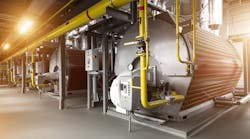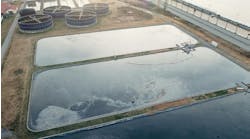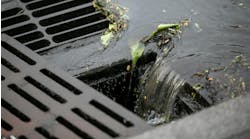Steam systems provide the core energy conduit in most process plants. Many plants closely monitor the operating parameters of individual equipment items (e.g., stack temperatures and excess air in boilers); doing so can have a big impact on operating costs. However, sites often ignore steam header balances. This is unfortunate, as steam balances can have an even larger impact on overall energy efficiency [1].
Steam systems produce and distribute heat in the form of steam, and, in many cases, generate and distribute power. The combined production of heat and power is called cogeneration; it’s an effective way of both increasing overall energy efficiency and reducing the total cost of providing energy for many process facilities. Typical equipment includes boilers, steam turbines, pressure reduction (“letdown”) valves, and deaerators. Some larger systems also incorporate gas turbines and heat recovery steam generators (HRSGs).
Steam turbines often drive machines (typically pumps or compressors), in which case the power requirement of the driven equipment dictates steam demand. Alternatively, steam turbines coupled to electric generators allow adjusting steam demand to balance the steam system. This affects the power output from the generator, so the amount of electricity imported from the grid — or in some cases exported to the grid — also will change.
Many different types of steam turbines exist (see: “Count On Steam Turbines”). However, in this discussion, we will consider only the simplest: backpressure turbines, where there is a single steam inlet and a single outlet, and the steam leaves the turbine above atmospheric pressure.
Three inefficiencies very commonly occur in steam balances:
Steam Venting. In many steam systems, too much steam reaches the lowest pressure header. The excess must be vented, which wastes both energy and water. Common causes include:
a. too much flow through backpressure steam turbines or letdown valves, which creates more low-pressure (LP) steam than the system can accommodate;
b. excessive amounts of LP steam produced in waste heat boilers, or by flashing vapor from condensate collection tanks;
c. inadequate turndown capability in boilers; and
d. control problems or hydraulic limits.
Steam Letdowns vs. Steam Turbines. When steam passes through a turbine, its pressure falls, and some of its heat content converts to power. When it passes through a letdown valve, its pressure drops, but its heat content (enthalpy) doesn’t change (this neglects heat losses from the surfaces, and other minor parasitic losses). In most cases, the incremental fuel cost to produce electric power in a steam system is much less than the value of the electricity it produces, so a financial incentive exists to maximize the use of steam turbines within the steam system, and minimize the use of letdown valves. However, in applying this concept be careful to respect all equipment constraints (e.g., maximum turbine steam flow, maximum and minimum boiler load, etc.), as well as overall system constraints. In particular, if increasing the flow through a steam turbine results in a steam vent, this usually means we no longer are saving money or energy. In practice, many steam systems don’t run close to their optimum steam turbine loading.
Deaerator Steam. Most steam systems use thermal deaerators to drive off oxygen and other dissolved gases from boiler feed water. In principle, only a small amount of steam is needed to do this. However, as the incoming water often is far cooler than the saturation temperature in the deaerator, a substantial amount of additional steam is used to preheat the water. It’s not uncommon to consume 10% or even 15% of the total steam from boilers to preheat water as it enters the deaerator.
Solutions
To improve your steam balance, the first step is to understand and develop a good steam balance. This can be a simple spreadsheet model, but online tools and commercial modeling systems and optimizers also are available.
Simple operating changes, such as adjusting steam flows through letdown valves or steam turbine-generator sets, or changing deaerator pressure can solve some of the inefficiencies discussed above. However, it’s often necessary to add equipment (e.g., thermocompressors — see, “Consider a Thermocompressor”) to achieve significant savings.
REFERENCE
1. Alan Rossiter and Beth Jones, “Energy Management and Efficiency for the Process Industries,” Chapter 18, AIChE/John Wiley & Sons, Hoboken, N.J. (2015).



